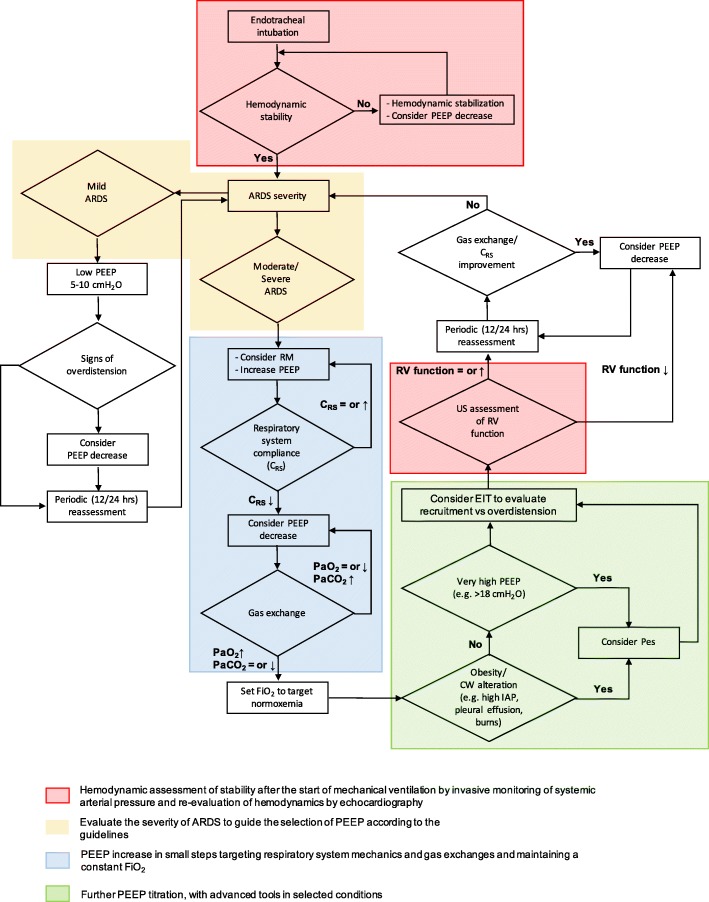Fig. 1.
Evidence-based decision-making flow chart for patients with ARDS requiring treatment using PEEP, according to patient physiological readouts. The approach we use to set up PEEP is applied either to patients in a supine position or to those with moderate-to-severe ARDS and prone positioning. Each step lasts normally 10 to 30 min. The area in light blue indicates that FiO2 remains constant throughout the steps. After PEEP titration FiO2 can be decreased (or increased) to target normoxia. Pre-existing barotrauma and (according to some authors) elevated intracranial pressure should discourage from application of high PEEP. Abbreviations and symbols: ARDS, acute respiratory distress syndrome; CRS, compliance of the respiratory system; CW, chest wall; EIT, electrical impedance tomography; FiO2, inspiratory oxygen fraction; PEEP, positive end-expiratory pressure; Pes, esophageal pressure; RM, recruitment maneuver; RV, right ventricle; US, ultrasound; ↑, increase; ↓, decrease; =, equal

